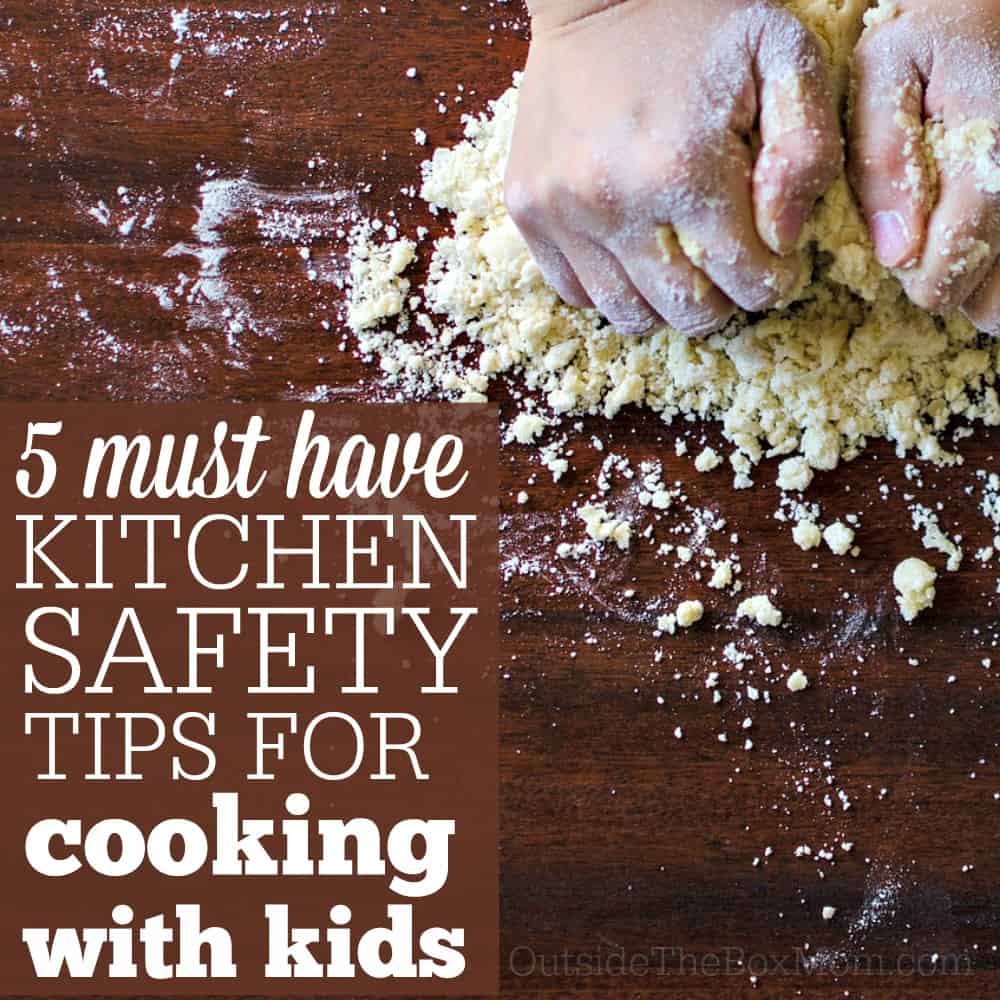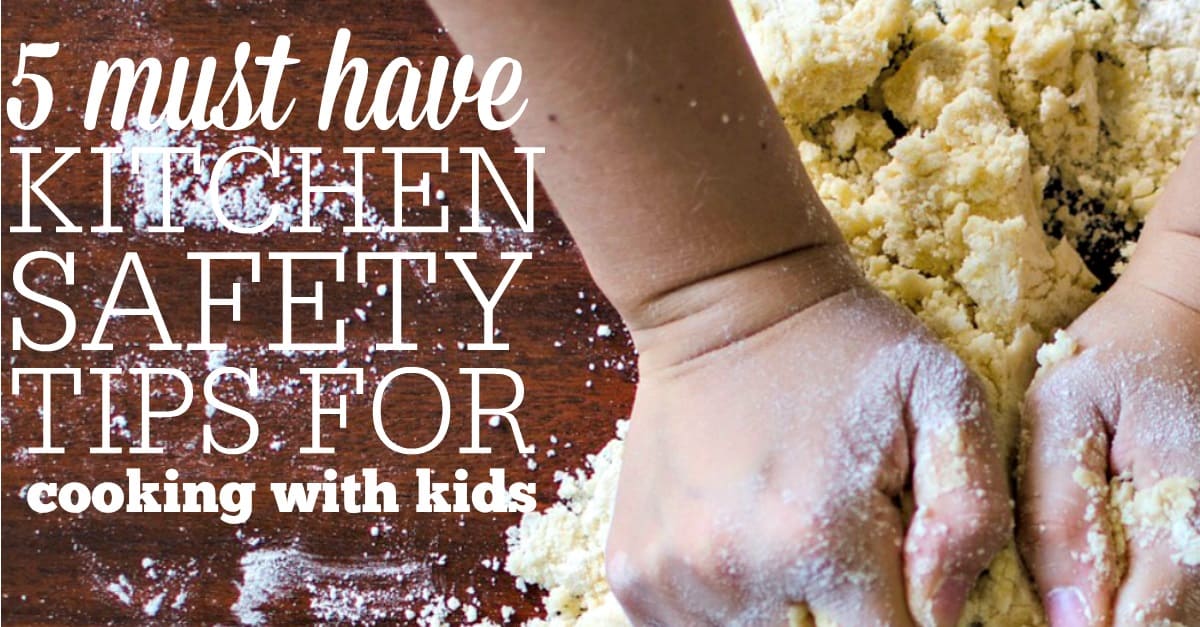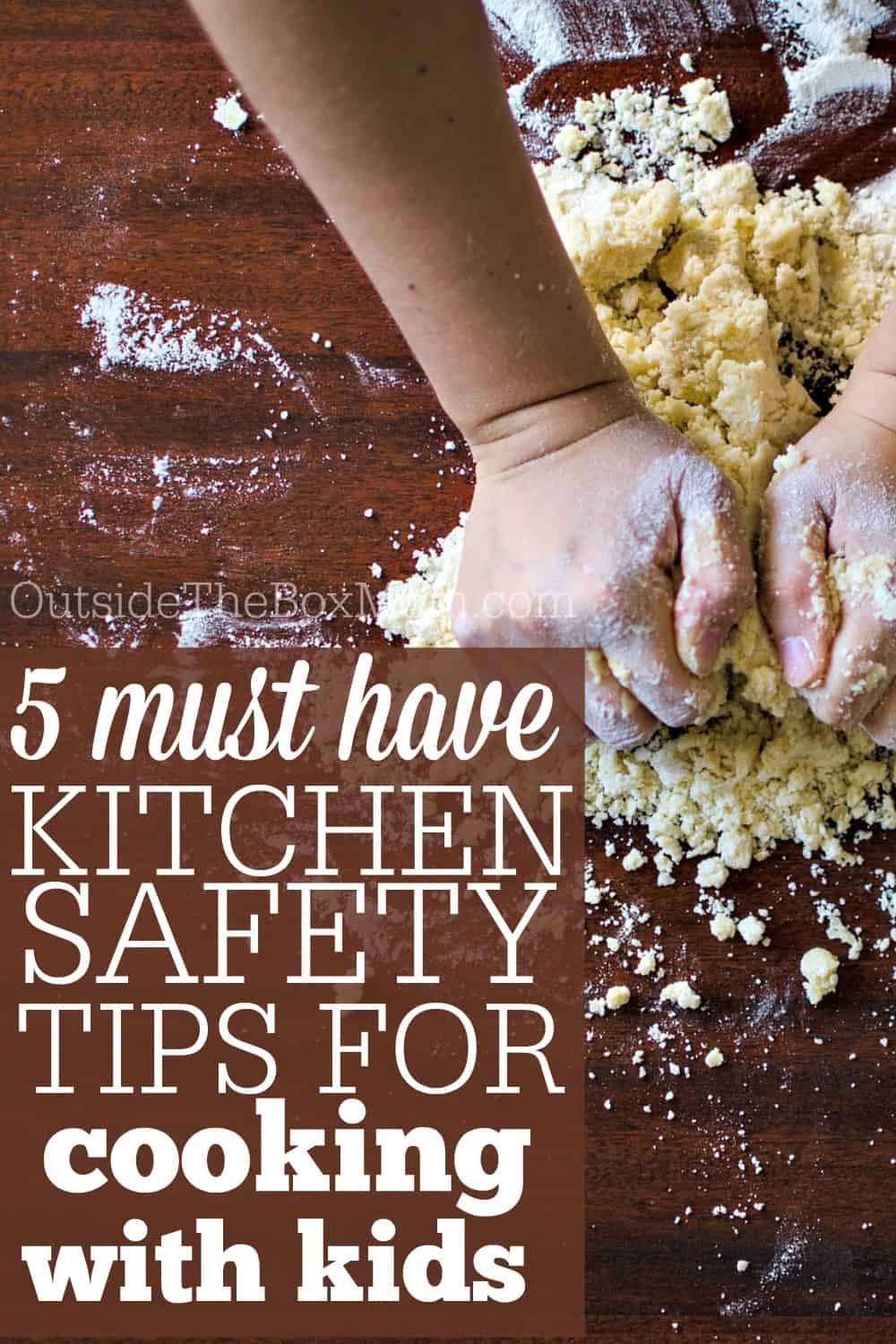Cooking is like a big experiment for kids, who tend to be more playful than cautious. Therefore, it’s up to us adults to keep the “laboratory” safe.
 Cooking at home may seem like a chore but if you get your kids involved, you’ve got the recipe for a great teaching activity. Think about it.
Cooking at home may seem like a chore but if you get your kids involved, you’ve got the recipe for a great teaching activity. Think about it.
You can teach them basic math skills when measuring amounts of ingredients, encourage them to eat healthy or try new types of cuisines, and help them learn the value of teamwork. And to be honest, it’s surprising how easily kids can get excited about cooking.
Of course, like many fun activities, cooking can be just a little bit dangerous. The National Fire Prevention Agency cites cooking as the number one cause of home fires. A 2013 study estimated that over the period of 1990 to 2008, around one-third of knife-related injuries are from kitchen knives.
And a study done by the CDC identified falls as the leading cause of non-fatal injury for age groups under 15 during the period of 2000 to 2006. Ever think about how many times you didn’t notice a puddle of water on the kitchen floor? Heat, blades, and slippery surfaces, oh my!
Clearly, before you think about getting your children in the kitchen, you should think about accident prevention. Cooking is like a big experiment for kids, who tend to be more playful than cautious. Therefore, it’s up to us adults to keep the “laboratory” safe.
Keep Kids Safe from Hot Stuff
Stovetop fires may be the biggest culprit when it comes to burns in the kitchen, but it’s not the only one. Baking in a pre-heated oven can also be risky.
Appliances like microwaves and induction cookers may not cause burns directly, but hot pots and containers can cause scalding injuries, too. And speaking of scalding, think about what hot steam or oil from a frying pan can do to children.
So when you’re getting some culinary assistance from children, safety habits against burns go a long way:
- Pots on the stove should be put on the back burner to minimize the chances of them being knocked off and hurting someone. If they have to be on the front burner, make sure the handles are away from the edge of the stove.
- Don’t let kids handle hot items by themselves, and remind them to blow on hot food before tasting it.
- Also, make sure they have the proper apparel like aprons and short-sleeved shirts (long sleeves can catch fire) before letting them do kitchen duty.
- If the job involves cooking with hot steam or oil, consider using safety goggles (with any luck, they’ll think it’s cool).
- And if you have to put out a grease fire, don’t use water or flour as that could make it worse. Instead, use baking soda or a fire extinguisher (as a last resort, since that would contaminate your kitchen).
A Little Germophobia Doesn’t Hurt
Good hygiene may not be one of the most critical concepts when it comes to safety tips for children, but it’s definitely important.
You remember how in “Charlie and the Chocolate Factory” all the kids wanted to eat the candy and play with the food in the factory? Well, you’d better expect your kids to do the same thing in the kitchen.
They may not be so excited about eating the savory stuff like stews or soups right away, but get them involved in baking sweets like pies, cupcakes or cookies and the temptation to lick the uncooked batter off the whisk may be too much for them.
Also, kids will be kids, so they may not be too concerned about things like washing their hands or not keeping raw meat and cooked items separate.
Though it might look fun in movies and TV shows, there are legitimate kitchen safety concerns that come with being messy in the kitchen.
For example, cookie or cake batter that contains raw eggs may cause salmonella poisoning.
And if you put raw meat next to the cooked items, there’s a big risk of contaminating your food with bacteria that can quickly grow and spread.
So when you’re cooking with little helpers, you’ve got to teach them the importance of keeping the prep area clean and keeping raw and cooked items separated. In addition, warn them not to put uncooked batter, egg whites, or meat or fish in their mouths.
Remember, taste testing should be done only when everything’s already been simmering or sizzling for a while.
Be Smart around Sharp Objects
Experienced home cooks may not commit common kitchen mistakes like having a filthy oven, but when it comes to kids, “safety first” is the most sacred principle.
Cooking with kids requires that you lay down really specific rules. When drawing up a list of kitchen crimes you should avoid, make sure that “playing with sharp objects” is right up there near the top.
Kids should know never to run with scissors. They should also be careful with knives. You need to make sure they don’t point the sharp end at anyone.
Show them proper knife technique: if they don’t have the skills to chop vegetables without risking cutting their fingers, then it’s probably best to give them other things to do.
You also have to watch them when they’re trying to use other sharp tools or equipment with blades, like graters, cookie cutters, blenders, and the garbage disposal.
Even using a regular can opener can be risky, since they can cut themselves on the edges of the can lids, although you can purchase child-safe can openers in some kitchen supply stores. For that matter, you can also get child-friendly knife sets so your child can chop veggies without any worries.

Wipe Off the Wet Stuff
Wet surfaces aren’t just a mess, they’re also a health and safety hazard. If you’re not careful, you or your child could slip on a wet floor and be seriously injured.
A knife or pot with a wet handle is clearly an accident waiting to happen. And think about the risk of mold or bacteria growing on moist surfaces, and imagine the consequences if they get into your food.
One of the most important kitchen safety tips is to always, always make sure your working area is appropriately dry. Any spills should be immediately mopped up; plumbing or drains that leak onto the floor should be fixed pronto.
Have a cleaning cloth or rag handy in case you need to wipe any damp areas. Keep the countertops clean to prevent the risk of things like cans or glass containers falling onto the floor and potentially hurting your little one.
Also, it should go without saying that children should not be allowed to clean up hot liquid spills—that’s for the mothers, fathers or other adults to take care of.
Be Their Big Helper
One reason cooking with kids is a good family activity is that they get to act like an adult. Daughters can watch their moms in the kitchen and enjoy imitating them, and sons can imitate their dads.
Another possible reason is that they’ve decided they’re not babies anymore and they want to be a little independent. You know how it is: at some point, kids get old enough to want to be old enough, and they start warming up to the idea of doing things by themselves.
This is the same tendency that can lead kids to take on more than they can handle. They may try to get items from an overhead cupboard by standing on an unsteady stool or try to carry things that are too heavy for them.
So if you’re thinking about safety tips when cooking with children, remember that you need to supervise and support them. Try to watch what they’re doing, even if it’s just every so often, so that you can see when it looks like they might hurt themselves trying to do something they can’t physically do.
When they want to reach something that’s too high or get something heavy, offer to do it for them and make it clear that it’s okay for them to get help. If five-star Michelin chefs need help in the kitchen, then kids definitely do too.
Cooking is a really important job, and there are a lot of rules you have to follow in the kitchen. It gets harder when you’ve got too many cooks, especially when they’re really young.
When you consider what you need to prepare when cooking with children, you’ll realize it’s not just the equipment and the ingredients: you have to prepare a set of extra safety measures as well.
Adopting a child-friendly cooking process may be a headache, but giving kids the chance to play with their food in the right way is well worth the effort.
More Activities to Do With Your Kids
- How to Make Crafts Fun & Safe For Your Kids
- Why Playing With Your Child Is More Important Than You Think
- 3 Benefits Of Teaching Kids To Sew (& Tips To Make It Easy)
- Why Kids Should Spend Time Around Animals
- Kitchen Safety With Kids
This is a guest post by Emily Harper, an Environment/Sustainability/Health and Women’s Advocate. She is also fond of analyzing home structure and design and has been a Home Stylist and Consultant. She is also an active community member, concerning community improvement and security. She loves to write as much as she loves to cook and bake cupcakes for her two little kids.
What are your tips for cooking with kids?

Your kids won’t be in safety if they found you cooking in the kitchen. Often, your kids will roam around and play with no hesitation. Always be aware to keep all pointed things such as knife and any kitchen use that can cause an accident. These kitchen safety tips for your kids will be very helpful for you and to prevent accidents.
This is probably not going to be a popular opinion – but I think that when it comes to cooking with kids, I prefer to go the messy route — especially when working with little ones. I find that it’s inevitable and if you concentrate too much on making sure that everything is as clean as it should be, then the fun part of cooking disappears.
My kids love watching me cook but with our small kitchen, I always have to make sure all the knives are out of their reach or are put in the sink as soon as I use them. Thanks for the tips, I will definitely make use of some of these.
Kitchen safety for kids is a must! Thanks for helping parents make sure their little ones know and practice kitchen safety rules to avoid injuries.
t can slip and cut you, (b) Always use a cutting board, (c) Protect your counter tops, (d) Keep blades sharp, (e) Keep knives clean (including handle) – slippery handles can cause injuries, (f) Don’t put knives in a sink of soapy water – they may not be seen and accidents can occur, (g) Wash and dry carefully keeping …